백남준아트센터
Into the scenes where anything could happen
Nam June Paik Art Center Collection
The photographic collection of Nam June Paik Art Center (NJPAC) is focused on experimental avant-garde performances flourishing in Europe in the late 1950s and early 60s when Nam June Paik was about to enter the art world. Photographs of his first solo exhibition held in Germany in 1963 take up significant part of the collection, too. Paik’s artistic spirit deeply rooted in these early practices came to open up a new land of media art. These photographs are thus crucial in that the documentation of historical events leads you to hark back to the origin of his media art. This is enabled by the inherent nature of photography that a moment photographically captured by chance provides a pleasure of imagining what would have happened outside of the photographic frame. The following three-part essay sketches out the NJPAC’s collection of photographs.
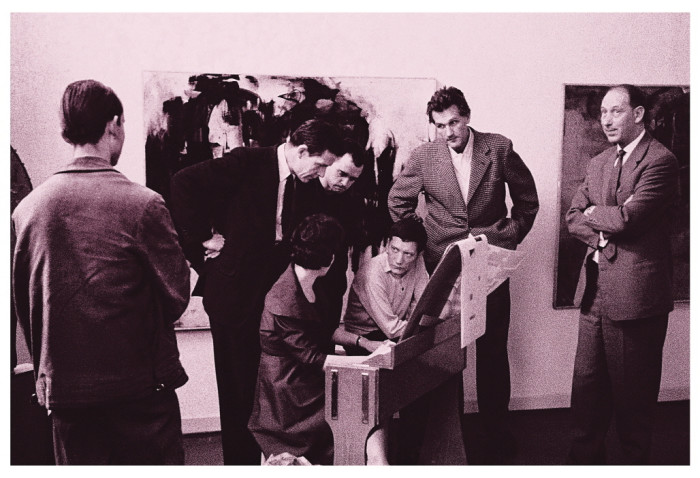
Fig1. John Cage, Françoise Deslogères, Sylvano Bussotti, Heinz-Klaus Metzger, Bernard Schultze, Jean-Pierre Wilhelm Rehearsal of Françoise Deslogères Playing on Ondes Martenot pièces of Sylvano Bussotti at Gallery 22 in Düsseldorf, 1958, 20.3x25.4cm, B&W photography
Photo by Manfred Leve
Moving to Germany in 1956, Paik joined a group of artists leading the art movement of Fluxus. The events they participated in took place not in traditional museums or theaters, but in venues where boundaries could be collapsed between music, drama and visual art. One of the places was Galerie 22 in Düsseldorf. Jean-Pierre Wilhelm, art patron of the Rheinland region, opened this gallery in 1957 and organized many concerts and performances of avant-garde artists, causing a great sensation across the Düsseldorf art scene. Most notably, John Cage’s Music Walk was held here in 1958. Its score consists of a transparent sheet of paper containing intersecting lines drawn at various angles as well as five parallel lines, and pieces of paper with different numbers of points. All these form a kind of musical note which is to be played out by the piano, on radios, or with a voice. In the same year, Sylvano Bussotti officially presented his own compositions for the first time. FIG. 1 is a rehearsal of Bussotti’s Brève, a solo piece for Ondes Martenot, an early electronic keyboard invented by Maurice Martenot in 1928. This instrument can generate different notes out of monophony by varying the oscillator’s frequencies, if not polyphony. The player in the picture is Françoise Deslogères sitting next to Bussotti, with Cage looking behind and Wilhelm at the far right of the photograph.
Paik also made his debut in Galerie 22 with an official premiere of Hommage à John Cage. While playing back a reel tape of collaged sound recordings from classical music to everyday noise, he performed on and pulled down a prepared piano on the stage. In FIG. 2 you can see composer I-Sang Yun standing next to Paik among the concert’s guests. Paik had met Cage in the Darmstadt International Summer Courses for New Music in 1958, which profoundly changed his thinking of art. He intended Hommage à John Cage to show Cage’s influence upon him and also his eagerness to surpass Cage. After Cage passed away in 1992, Paik wrote how influential Cage was for his life, saying that he met Cage in 1958 so 1957 is 1 B.C. (Before Cage), and that because Cage died in 1992, 1993 is A.D. 1 (After Death).
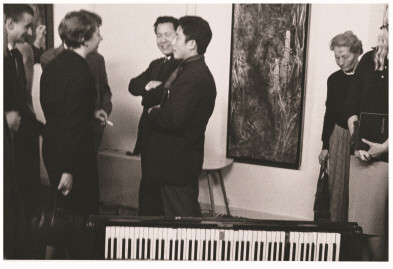
Fig2. I-Sang Yun, Nam June Paik; Nam June Paik, "Hommage à John Cage" Gallery 22 in Düsseldorf, 1959, 20.3x25.4cm, B&W photography
Photo by Manfred Leve
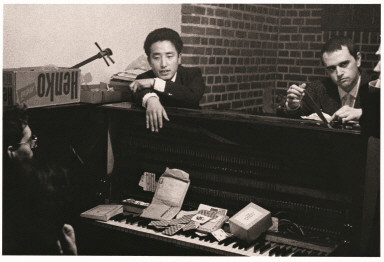
Fig3. Hans G Helms, Nam June Paik, Sylvano Bussotti; Nam June Paik, Auffuhrung von Nam June Paiks,"Hommage à John Cage" Atelier in Köln, 1959, 20.3x25.4cm, B&W photography
Photo by Manfred Leve
Just before the premiere in Düsseldorf, Hommage à John Cage was performed as a kind of preview in Paik’s studio in Köln for a group of fellow artists. FIG. 3 shows the Cologne preview, where you can see Hans G. Helms at a prepared piano, and Paik and Bussotti standing behind. It was again staged next year in the atelier of Mary Bauermeister in Köln – Bauermeister later became a close friend of Paik’s and shared artistic practices by exchanging letters with him up to the early 1970s. Her Cologne atelier was a stronghold of artistic experimentation and often a venue for premieres of Fluxus performances. In June 1960, Counter-Festival (Contre-Festival zum Kölner IGNM-Fest) was organized here against the conservatism of International Society for New Music (IGNM, Internationale Gesellschaft für Neue Musik). Some artists from IGNM, and others who were ruled out by jury members of IGNM were gathered in the atelier for readings, happenings and musical concerts. One of these was Paik’s Hommage à John Cage. FIG. 3 is one of the photographs of this concert where you can see Paik and Bussotti standing behind a prepared piano.
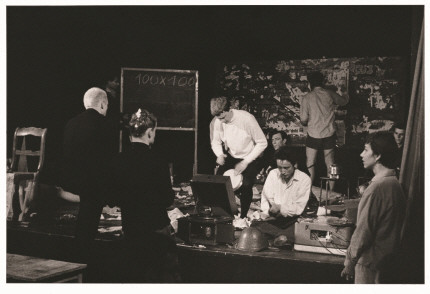
Fig4. Nam June Paik, Neo-Dada in der Music, A performance at Kammerspiele in Dusseldorf, 1962, 20.3x25.4cm, B&W photography
Photo by Manfred Leve
Among the occasions where Paik’s early performances were premiered was Neo-Dada in der Musik in the Kammerspiele Theater, Düsseldorf in 1962. Co-directed by Paik and George Maciunas, this Fluxus event featured Carlheinz Caspari, Ben Patterson, Tomas Schmit and Wolf Vostell, with Jean-Pierre Wilhelm’s opening remarks. FIG. 4 shows parallel performances of artists including Paik’s in Neo-Dada in der Musik. Here Paik performed for the first time One for Violin Solo and Sonata Quasi Una Fantasia. For the latter, Paik played Beethoven’s Piano Sonata No.14, popularly known as Moonlight Sonata, taking off his clothes like striptease. Borrowing Beethoven’s own title, Paik layered it with a sexual metaphor so that the ‘fantasy’ became a double entendre. One for Violin Solo was a performance in which Paik lifted up a violin very slowly and intently and then smashed it with one blow on the table. In the audience there was the first violinist of Düsseldorf Symphony Orchestra. Aware that Paik would destroy the musical instrument, he shouted “Save the violin!” in the middle of the performance, and Joseph Beuys and Konrad Klaphek shouting back “Don’t interrupt the concert!” stopped the violinist and kicked him out. This prompted a newspaper article headlined “A Concert Expelling the Audience.” Writing down this anecdote, Paik wittily commented that he did not understand why the violinist came to his concert in the first place. In addition to these two works, Paik’s repertoire also included Smile Gently – Etude Platonique No.5 and Bagatelles Americaines. 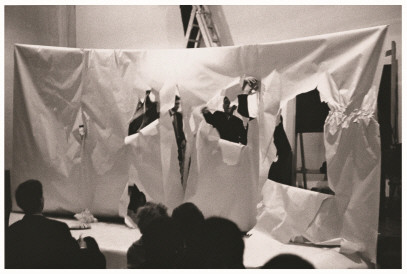
Fig5. Benjamin Patterson,"Paper Piece"(1960), Festum Fluxorum Fluxus, Musik und Antimusik- Das Instrumentale Theater, Staatliche Kunstakademie in Düsseldorf , 1963, 20.3x25.4cm, B&W photography
Photo by Manfred Leve
After Neo-Dada in der Musik, Beuys proposed to Paik his exhibition in Kunstakademie Düsseldorf where Beuys held a teaching post. Instead of his own show, Paik came up with a Fluxus event, which was then combined with Maciunas’ Fluxus tours coming through Wiesbaden, Copenhagen and Paris. Finally in February 1963, the Fluxus festival entitled Festum Fluxorum Fluxus, Musik und Antimusik – Das Instrumentale Theater was realized in Staatliche Kunstakademie Düsseldorf. In the first evening of Festum Fluxorum Fluxus, a large sheet of paper was stretched out at the stage behind which Jean-Pierre Wilhelm gave an introductory speech. Then another large sheet paper was rolled out above the audience. It was the beginning of Benjamin Patterson's Paper Piece. Patterson’s score written in 1960 contains instructions for paper actions to fold, rip, crush, rub and throw away strips of paper over the audience. With the sounds of crumpling and tearing paper behind, holes appeared on the onstage paper screen one by one. As performers threw wadded paper balls onto the audience, the holes were getting bigger and bigger as shown in FIG. 5. The performance came to a close with the paper remains scattered across the floor. Patterson’s Paper Piece is regarded as one of the first Fluxus attempts to directly engage with the audience.
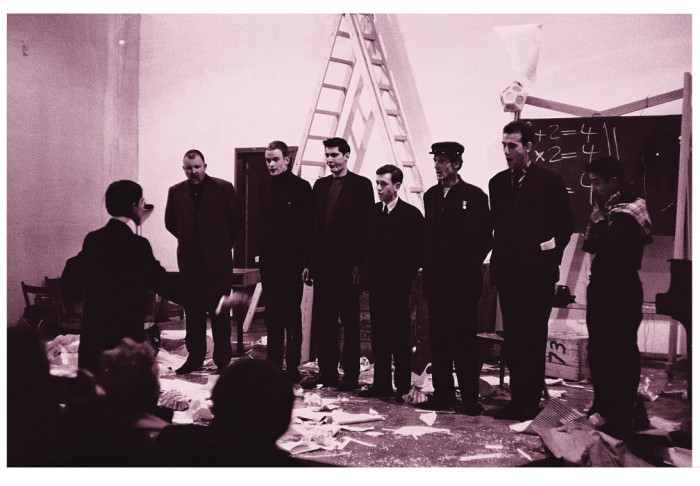
Fig6. George Maciunas dirigiert Dick Higgins' Constellation No. 7, 1959 Wolf Vostell, Tomas Schmit, Frank Trowbridge, Bengt af Klintberg, Arthur Köpcke, Daniel Spoerri, Nam June Paik, 1959, 20.3x25.4cm, B&W photography
Photo by Manfred Leve
In Festum Fluxorum Fluxus, Paik also played a performer’s role in different gigs like Dick Higgins’ Constellation and Graphis. Producing a series of Constellation, Higgins referred to individual sound units as events, with several events making up a constellation. He composed works in which sounds are made simultaneously by several performers using strings, gongs, bells, tubes, or voices, with a clearly defined percussive attack and a delay of no longer than a second. In FIG. 6, you can see the performance of Constellation No.7 featuring Wolf Vostell, Tomas Schmit, Frank Trowbridge, Bengt af Klintberg, Arthur Køpcke, Daniel Spoerri and Paik, along with conductor Maciunas.
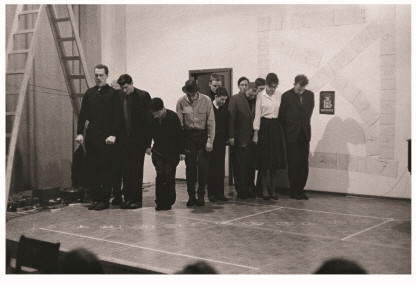
Fig7. Dick Higgins' Graphis 119(1962), Dick Higgins, Frank Trowbridge, Nam June Paik, Joseph Beuys, Tomas Schmit, Bengt af Klintberg, Wolf Vostell, Alison Knowles, Daniel Spoerri, Festum Fluxorum Fluxus, Musik und Antimusik- Das Instrumentale Theater, Staatli, 1963, 20.3x25.4cm, B&W photography
Photo by Manfred Leve
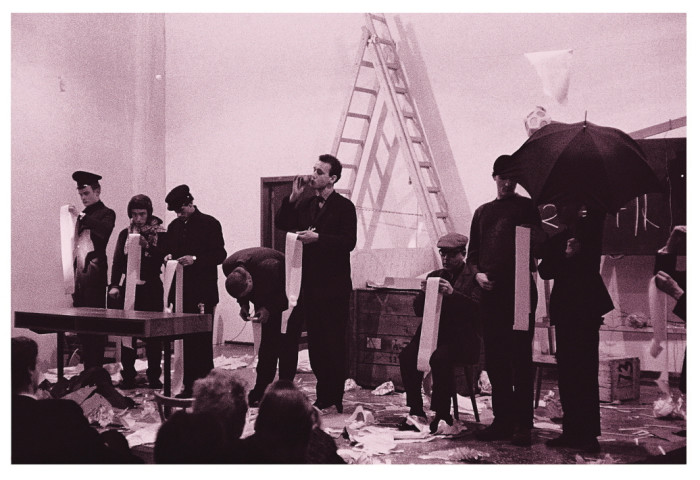
Fig8. George Maciunas, In Memoriam Adriano Olivetti(1961), Festum Fluxorum Fluxus, Musik und Antimusik- Das Instrumentale Theater, Staatliche Kunstakademie Düsseldorf, 1963, 20.3x25.4cm, B&W photography
Photo by Manfred Leve
For Graphis, Higgins took inspiration partly from John Cage, with whom he studied in 1958. Against the traditional theater that specified what performers should do and say by means of scripts made up of a sequence of events, the Graphis series was in pursuit of an ‘abstract’ style of plays freed of any fixed time structures and acting conventions. Its graphic notations were all about movements and sounds which could be produced by or with the human body, as if calligraphically, out of the material settings of the stage. Among over 130 pieces of this series, FIG. 7 is Graphis No.119 in Festum Fluxorum Fluxus in which large wooden blocks were pushed across the stage first, and then Higgins walked to the stage, followed by Trowbridge, Paik, Beuys, Schmit, Køpcke, Vostell, Maciunas, Spoerri, and Alison Knowles. Leaning forward and watching the ground, they were attentive to Higgins reciting his score. Paik was featured in Maciunas’ In Memoriam Adriano Olivetti, too. Adriano Olivetti was an Italian engineer and entrepreneur known worldwide for manufacturing Olivetti typewriters, calculators and computers. Maciunas’ score is based on used tapes from an Olivetti adding machine. Every performer has paper strips from the calculator in their hands, and each time a number assigned to them respectively on the paper comes to the row, the performer executed a small specific action allocated for the number, such as: to fold and unfold an umbrella, to blow a whistle, to jump up and down, to make a deep bow, to give a salute, to outstretch a finger at someone or something. The performers in Festum Fluxorum Fluxus were Klintberg, Trowbridge, Schmit, Vostell, Køpcke, Spoerri, and Emmett Williams. Second from the left of FIG. 8 is Paik wearing a round cap.
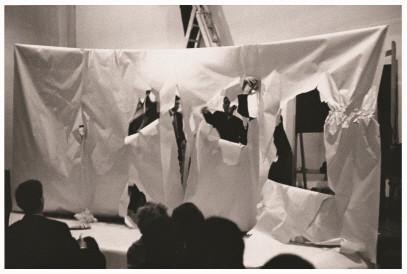
Fig9. Nam June Paik, Young Penis Symphony(1962), Festum Fluxorum Fluxus, Musik und Antimusik- Das Instrumentale Theater, Staatliche Kunstakademie Düsseldorf, 1963, 20.3x25.4cm, B&W photography
Photo by Manfred Leve
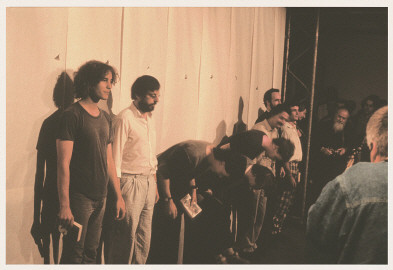
Fig10. Nam June Paik's Young Penis Symphonie, Kölnischer Kunstverein, 1986, 20.3x25.4cm, color photography
Photo by Manfred Leve
Above all, Festum Fluxorum Fluxus was where Paik presented his most provocative performances. One of them is Young Penis Symphony. Paik composed a series of Fluxus scores called Symphony, and in the 1973 writing My Symphonies he explained about them. The first one is Young Penis Symphony written in 1962 and published in Décollage No.2 the same year. Symphony for Twenty Rooms written in 1962 was published in Fluxus Anthology in 1963, thus No.2. On writing the score of Young Penis Symphony, Paik added a note that its actual performance was scheduled for about 1984, meaning that he did not expect it to be on stage in the near future. The score specifies that ten young men standing behind a large sheet of paper poke their erect penises through the paper towards the audience one at a time. FIG. 9 is a picture of this performance in Festum Fluxorum Fluxus. When Patterson’s Paper Piece was in progress, with paper balls thrown onto the audience, another large sheet of paper was set up. Then young male performers standing behind stuck their fingers through the paper instead of penises. This symphony was performed later correctly as prescribed by the original score, in a private event organized by Ken Friedman in La Mamelle, San Francisco in 1976, and in the exhibition Die 60er Jahre, Kölns Weg zur Kunstmetropole, Vom Happening zum Kunstmarkt, in Kölnischer Kunstverein in 1986. FIG. 10 is the Cologne performance.
Fig11. Nam June Paik, Fluxus Champion Contest, 1963, 20.3x25.4cm, B&W photography
Photo by Manfred Leve
The ending of Festum Fluxorum Fluxus was Paik’s Fluxus Champion Contest whose instructions are as follows: performers gather around a large tub or bucket on stage; all piss into the bucket; as each pisses, he sings his national anthem; when any contestant stops pissing, he stops singing; and the last performer left singing is the champion. FIG. 11 shows participating artists from different nationalities standing in a circle around a bucket to perform this score and Paik timing it with a stopwatch. It was Trowbridge from the US that won this contest with a record of 59.7 seconds and was honored with the US national anthem. In a postscript called ‘afterlude’ to his first solo show Exposition of Music – Electronic Television held in March of the same year, Paik mentioned: his television is like Fluxus Champion Contest in that it is “NOT the expression of my personality, but merely a “PHYSICAL MUSIC”. Through such works as Fluxus Champion Contest and Young Penis Symphony, Paik brought taboos into his works of art and challenged norms and canons of social authorities while at the same time searching for novel ways to examine sensory dimensions of the relationship between the body and the world.
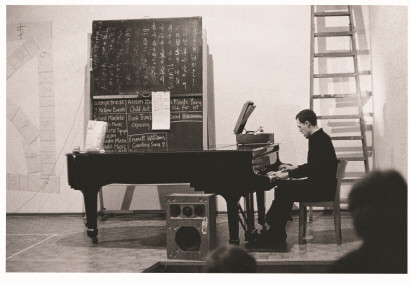
Fig12. Dick Higgins begleitet, Litany and Response No.2 for Alison Knowles von Emmett Williams, Festum Fluxorum Fluxus, Musik und Antimusik- Das Instrumentale Theater, Staatliche Kunstakademie Düsseldorf, 1963, 20.3x25.4cm, B&W photography
Photo by Manfred Leve
As well as figures and actions, these photographs hint at something interesting from the background. In FIG. 12 where Higgins is playing Litany Piano Piece for Emmett Williams at Festum Fluxorum Fluxus, what you can find out in the black board behind his piano leaning against the wall is Korean words in neat handwriting. “Ladies and gentlemen, we the Fluxus members are deeply grateful to you for coming to this event despite the freezing weather. On the same black board in FIG. 11 part of the Korean words of greetings was erased and the title Fluxus Champion Contest was written over it. From these photographs it can be speculated how the event’s physical backdrop was constructed and how its programs proceeded along. Another indication is Paik’s humorous disposition such that he wrote welcome remarks in a respectful tone, contrary to the subversiveness of the performances, even in Korean, a language that most of the participants attending the event would not understand.
The photographs explored so far were taken by Manfred Leve. “The young man who often hovered around Jean-Pierre Wilhelm’s gallery now became a bureaucratic director of Federal Labor Office. In his underground days, however, he took very artistic and ingenious photographs of German avant-garde art. It would not be possible to publish a book about German art without his photographs. Whenever he has a little time available from the duties of civil service, he diligently takes a photograph even now.” This is a paragraph from Beuys Box that Paik wrote in 1986. Photographs taken by the person hanging around free-spirited artists of the time, still demonstrate the capacity to convey their vigor and liveliness today.
<ggc의 모든 콘텐츠는 저작권법의 보호를 받습니다.>
세부정보
Writer : Seong Eun Kim/ An anthropologist specializing in museology and contemporary art, Kim’s areas of research interest include the material and bodily agency of media art and the sensorial dimensions of art museums in performing knowledge. Having worked in Nam June Paik Art Center from 2011 to 2014, Kim is now in charge of education and public programs in Leeum, Samsung Museum of Art.
@참여자
- 글쓴이
- 백남준아트센터
- 자기소개
- 백남준아트센터는 작가가 바랐던 ‘백남준이 오래 사는 집’을 구현하기 위해 백남준의 사상과 예술활동에 대한 창조적이면서도 비판적인 연구를 발전시키는 한편, 이를 실천하는 데 주력하고 있다.